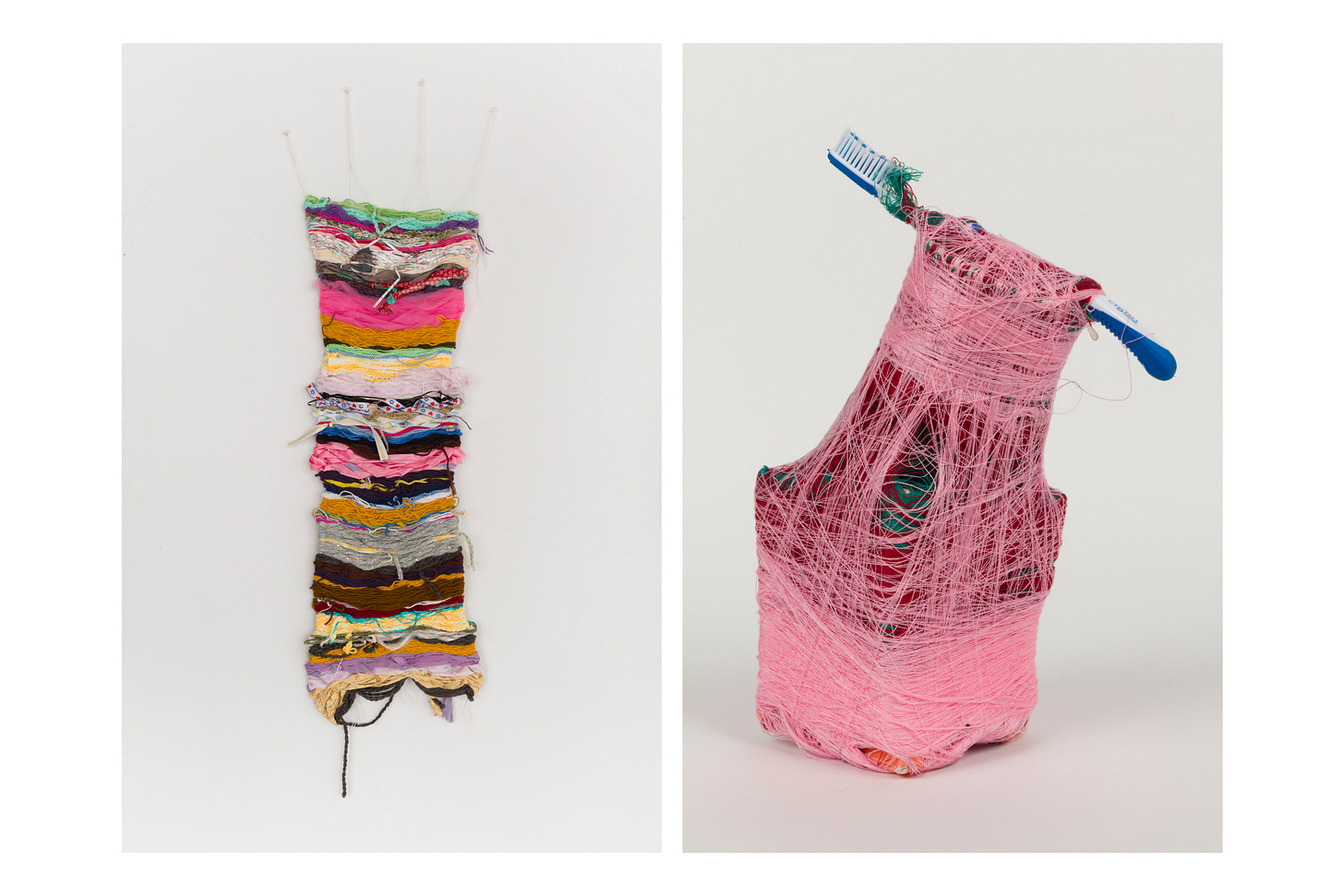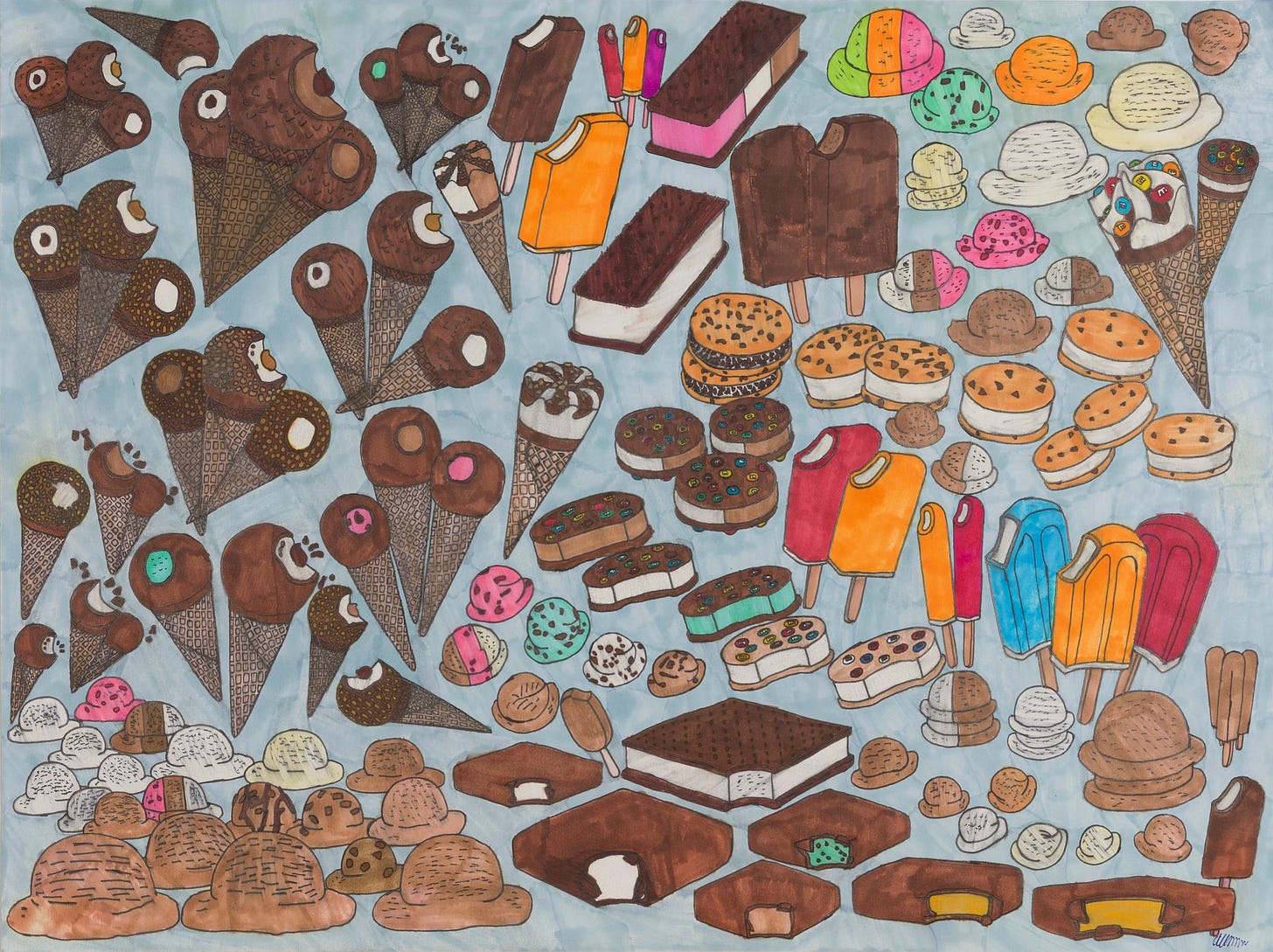May We Recommend?
“Look Here,” an exhibition series and symposium, showcases work from the progressive studio movement.
Look Here, Center for Creative Works
Written by Elizabeth Fazzare
“Who gets to call themselves artists and why?” asks Lori Bartol. “And why doesn’t someone if they have an intellectual disability?” The director of the Pennsylvania-based nonprofit Center for Creative Works (CCW) and cofounder of the international Progressive Art Studio Alliance has been rewriting the answers to these questions for more than two decades. Leading organizations that support the career development of contemporary artists with disabilities, Bartol has helped provide studio space, materials, and exhibition opportunities to talents that have not historically been accepted within the conventional art market. This fall, work by neurodivergent artists from across the progressive art studios network will come together through the Look Here project, a series of exhibits and a symposium taking place between the Center for Creative Works studio in Philadelphia and the art galleries at nearby Haverford College.

Opening September 19 at the college’s Cantor Fitzgerald Gallery, “Look Here” will feature six talents across media, from Kelly Brown’s woven sculptures made solely by touch (Brown does not have the ability to see, speak, nor hear) to Allen Yu’s meticulous drawings of everyday objects, including SEPTA train cars and McDonald’s sandwiches. The show is curated by Jennifer Gilbert and CCW artists Mary T. Bevlock and Paige Donovan, who have also selected the works for “Look There,” an adjacent show of all 105 of their CCW peers. Gilbert is also organizing “Look Everywhere,” an exhibit of 33 artists from progressive art studios at CCW’s Atelier Gallery. It will run concurrent to the sixth annual Creating Community symposium in Pennsylvania, its first East Coast edition.
“If you look at art history, there’s very little representation of artists with disabilities,” says Bartol. “Of course, they’ve always been working. They’re just not represented.” Thus, the progressive art studio movement began more than 50 years ago at the Creative Growth Art Center in Oakland, California, to address this exclusion. Finally, change is visible in expanding art market interest for new voices.
In 2024, SFMOMA acquired more than 150 artworks made by artists with disabilities, the largest institutional collection in the world. “There’s a growing collector base and a growing value of the work itself,” says Bartol. “I think that's all proof that the interest is certainly not based in charity. Putting these artists into settings with other artists without an outsider or disability label—that’s groundbreaking.” ⌂



